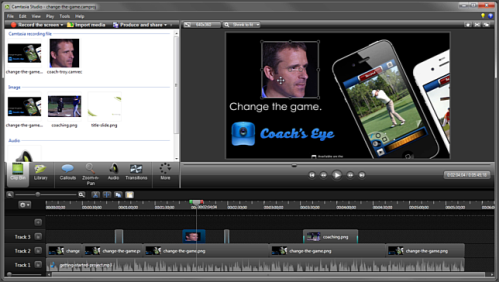From the horse’s mouth, so to speak
What is it that Adobe is announcing?
Adobe announced to increase its efforts on HTML5, use of the Flash Player for applications (packaged with AIR) and specific desktop browsing use cases including premium video and console-quality gaming. As a result, Adobe will no longer develop Flash Player for mobile web browsers. See this Flash Platform blog post for more details: http://adobe.ly/sbokei
Does this mean that Adobe is no longer supporting content publishers focused on delivering content via a browser on a mobile device?
Adobe offers world-class tools and technologies including HTML5 tools like Edge that allow content publishers and developers to bring rich content and experiences across mobile web browsers using HTML5.
What does this mean for Flash Player support on desktops?
Adobe is fully committed to providing a great experience for use cases not yet well supported by HTML, including console quality gaming and premium video. In fact, Flash Player 11 just introduced dozens of new features, including hardware accelerated 3D graphics for console-quality gaming and premium HD video with content protection. We are already working on Flash Player 12 and a new round of exciting features which we expect to again advance what is possible for delivering high definition entertainment experiences.
Why is Adobe making this move now?
All the major platform providers (Android, iOS, Windows 8) are betting on HTML5 for browsing, some even to the point of excluding third party plug-ins such as Flash Player. Adobe sees this as the right time to increase our focus on accelerating the development of HTML for in browser experiences, especially on mobile (phones and tablets), and general purpose apps, while using Flash to drive whatʼs possible in advanced interactive entertainment areas like console-quality gaming and premium video so that it can continue to serve as a blueprint for further work on HTML. Flash developers get the greatest reach by targeting mobile devices with apps packaged with AIR, and that is where we are investing while helping the mobile browsers advance the state of the art of what can be done in a browser. Our new strategy allows us to maintain leadership in web content and give developers the best tools to create content across all platforms.
Will Adobe continue to support AIR? On Mobile? On TVs?
Adobe is fully committed to enabling Flash based apps via AIR on mobile and digital home devices.
Will the Flash Player continue to be available on the Android Market?
Yes. The current version of Flash will be available on the Android Market in the near future.
When will Adobe stop supporting Flash Player for browsing on mobile?
Adobe will release one more version of the Flash Player for mobile browsing, which will provide support for Android 4.0, and one more release of the Flash Linux Porting Kit – both expected to be released before the end of this year. After that time, Adobe will continue to provide critical bug fixes and security updates.
What will happen with Flash Player support on RIMʼs BBX platform?
Adobe will continue to support RIMʼs use of the Flash Player on the current PlayBook configurations with critical bug fixes and security updates. RIM has done a great job optimizing the Flash Player for their platform and as a result the RIM playbook provides a great experience for consuming Flash content. RIM is expected to leverage their expertise with Flash to continue to support and ship the Flash Player on BBX devices for the foreseeable future.
Will the current version of Flash Player support smartphones and tablets that are
coming to market over the coming weeks and months?
It depends on the version of the OS, silicon, and browser supported on the device. We are working with OEMs to determine the appropriate support and transition plan for their current and planned devices.
Will Adobe stop OEMs from shipping Flash Player on devices?
No, Adobe will not stop OEMs from pre-loading and shipping the Flash Player. We expect some of our OEM partners to opt to continue working on and releasing their own implementations of the Flash Player. However, Adobe will be recommending mobile OEMs discontinue pre-loading new devices with Flash Player due to expected OS and browser compatibility issues. However, existing licensees can continue shipping Flash Player at the manufacturerʼs discretion.
Will 3D support and any of the console-quality Flash games you demoed at MAX come to mobile devices?
Yes, game developers will be able to bring console-quality games with hardware-accelerated 3D graphics to mobile devices as Flash based apps packaged with AIR. On the desktop 3D games can be delivered with Flash within the browser or as a Flash based app via AIR. However, 3D content will not be supported in Flash Player on mobile browsers.
What does this mean for Flex?
Flex SDK 4.5 supports the development of mobile applications that target, or are packaged with AIR. Mobile applications built with Flex SDK are installed on phone or tablet devices and do not rely upon the browser or Adobe Flash Player to run; as such, they are unaffected by this announcement.
How does this affect other Flash Platform tools?
This news has no impact on the Flash platform tooling offerings (e.g. Flash Builder) from Adobe.
Is Flash getting more and more replaced by HTML5? How will Adobe advance Flash Player on desktops and stay relevant?
We are continuing to invest in Flash to deliver the most advanced web experiences on desktops, focusing on features that are not yet available in HTML5. Flash Player 11 just introduced dozens of new features, including hardware accelerated 3D graphics for console-quality gaming and premium HD video with content protection. Flash developers can take advantage of these features, and all that Flash has to offer, to reach more than a billion desktops through their browsers and repurpose their content to hundreds of millions of mobile devices through popular App Stores using Flash based apps packaged/enabled with AIR.
We are already working on the next future version of Flash Player and a new round of exciting features which we expect to again advance what is possible for delivering high definition entertainment experiences across the Web and devices. We will continue to leverage our experience with Flash to accelerate our work with the W3C and WebKit to bring similar capabilities to HTML5 as quickly as possible, just as we have done with CSS Shaders. And, we will design new features in Flash for a smooth transition to HTML5 as the standards evolve so developers can confidently invest knowing their skills will continue to be leveraged.
How many Flash-based apps are available on App Stores today?
There are thousands of Flash based apps available on App Stores like Android Market, AppWorld, or Amazonʼs App Store. Popular and top rated examples include Machinarium, Politifact, Dr Stanleyʼs House, Facebook on BlackBerry, WatchESPN etc.
How are Flash-based apps different from HTML5 apps?
Flash based apps deliver features and capabilities not yet supported in HTML5 such as 3D graphics or content protection for premium video. Developers are able to deliver high-end entertainment experiences as Flash based apps packaged via AIR on mobile platforms and within the browser on desktops.
What about Flash Player and support for web browsing on TVʼs (Google TV, Samsung SmartTVs and other connected Digital Home devices)?
Adobe will continue to support existing licensees who are planning on supporting Flash Player for web browsing on digital home devices and are using the Flash Player Porting Kit to do so. However we believe the right approach to deliver content on televisions is through applications, not a web browsing experience, and we will continue to encourage the device and content publishing community down that path.
What happens to Flash browsing support in the Google TV solution?
We recommend you talk with Google, but we believe Google has no immediate plans to remove the Flash Player from the Google TV browser.
Do you regret having waited so long after Steve Jobs predicted that Flash Player wonʼt work on mobile devices 1.5 years ago?
HTML5 has matured and is able to deliver a great web browsing experiences across mobile devices. At the same time users consume rich content almost exclusively via apps on smartphones and tablets today.
At Adobe we are focused on delivering the best tools and technologies for our developers and content publishers so they can offer the best possible experiences to their customers across platforms – from desktops to smartphones, from tablets to TVs. We are proud to lead the industry with HTML5 tools while offering new, cutting– edge features in Flash that are not yet supported in HTML5.
Is this expected to improve the relationship between Adobe and Apple?
Adobe and Apple have a longstanding relationship and Mac and iOS users are very important to Adobe. Like with any other company in the industry we work closely with Apple in specific areas like support for our Creative Suite products on Mac OS while we compete in other areas like video editing tools.
What platforms and browsers will Adobe continue to support with Flash Player for browsing?
Adobe plans to continue to support Apple Mac OS X and Safari; Google Chrome Browser for Mac OS X, Microsoft Windows and Intel-based Chrome OS; Microsoft Intel based Windows and desktop Internet Explorer; and cooperate with other third-party browser providers such as Mozilla and Opera.
How will content publishers serving premium video reach mobile devices?
Content publishers can continue to stream premium, Flash based video content across platforms and devices including the iPhone and iPad using Flash Media Server 4.5. Additionally, content publishers can deliver premium video experiences as Flash based applications packaged with AIR across platforms including connected TVs.
Does Adobe intend to bring HTML5’s capabilities to full parity with Flash Player? If yes, then why continue supporting Flash Player for desktop?
HTML5 today cannot replace the Flash Player as a platform for delivering console gaming or premium video experience on desktop computers. Adobe plans to leverage its expertise around these use cases to help HTML5 catch up to the Flash Player, but even with the rapid pace of innovation for HTML5 it will take time for HTML5 to catch up to Flash.
Will Adobe create Flash Player for Windows 8 on ARM and Windows 8 on X86?
Adobeʼs plan is to continue supporting Flash Player for browsing on desktops going forward with Windows 8 on X86 only.
Read Full Post »


